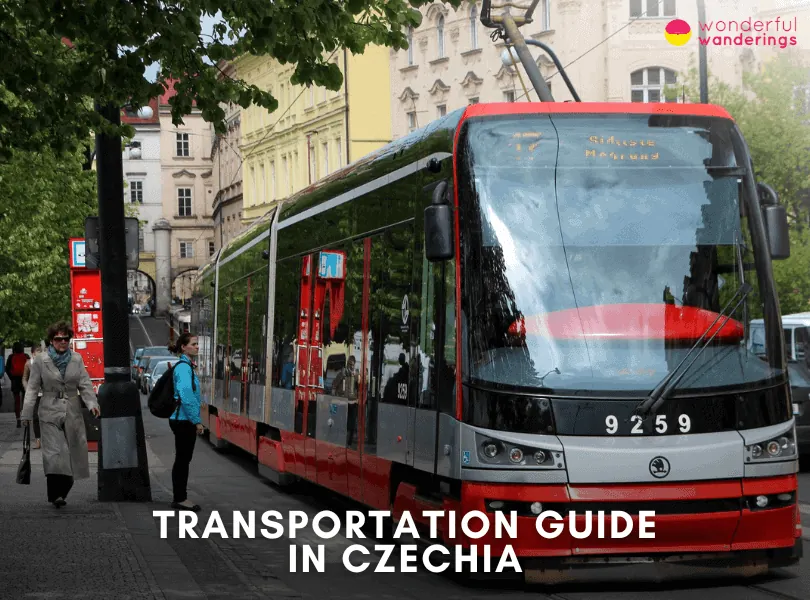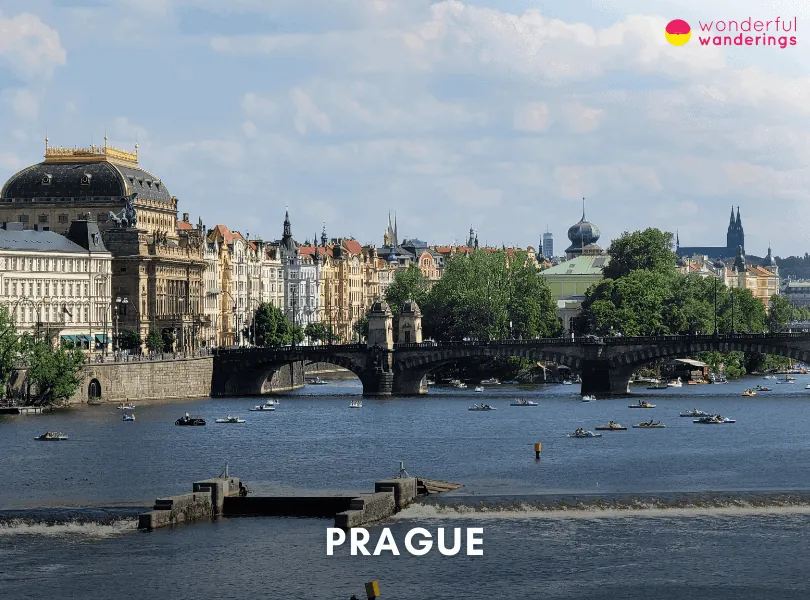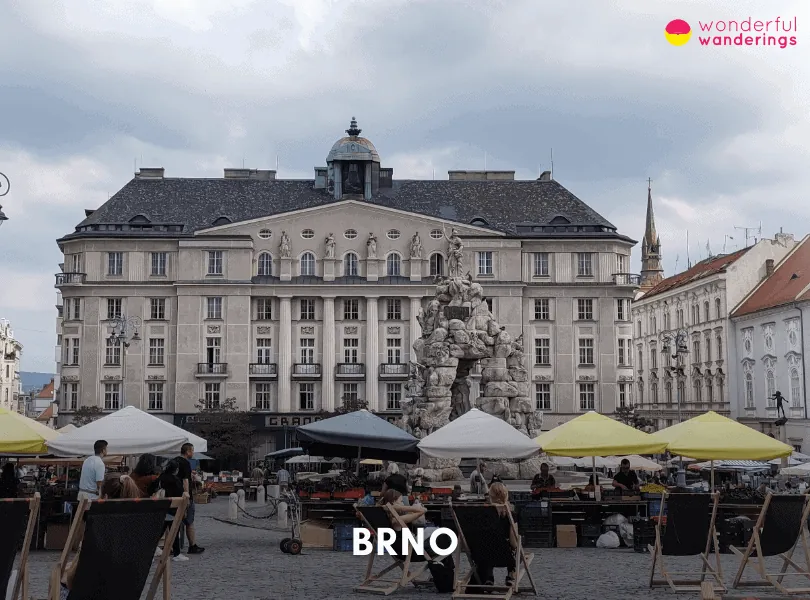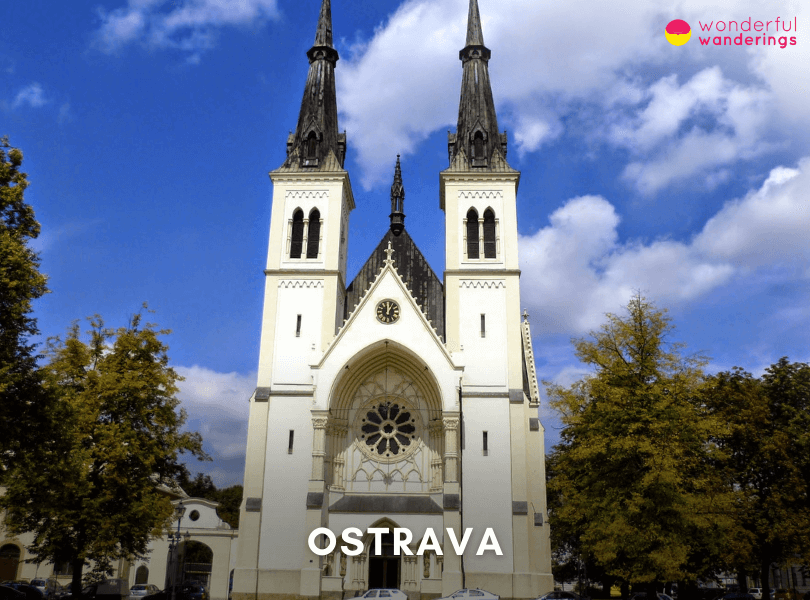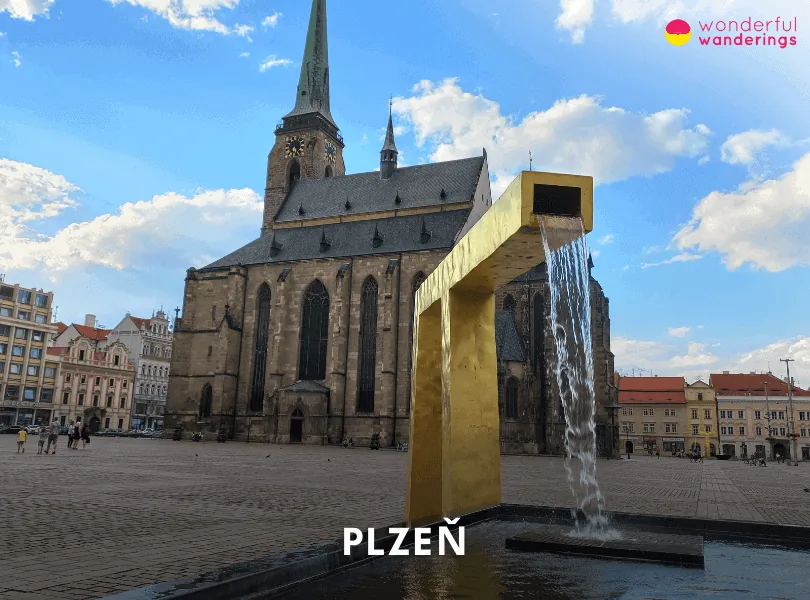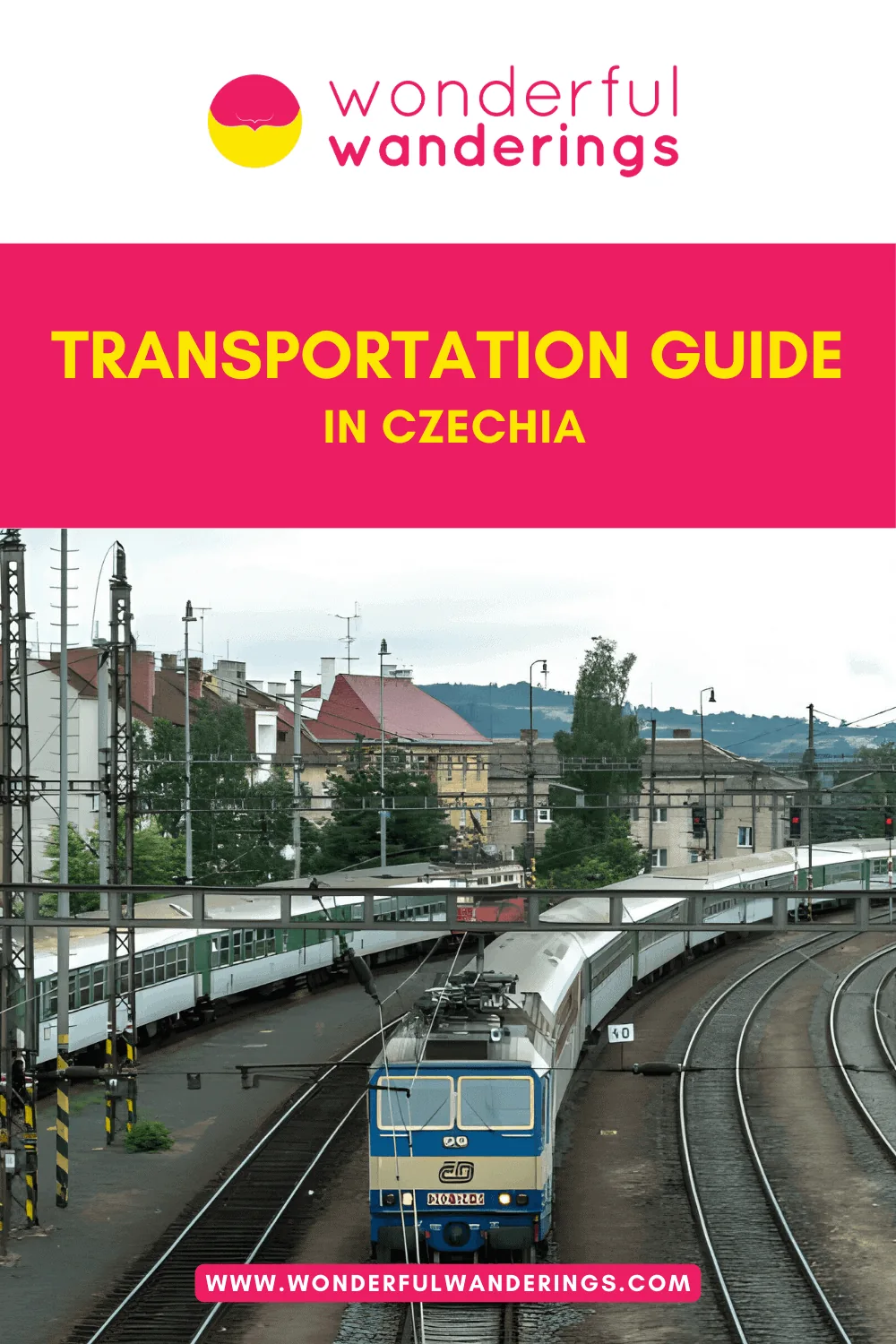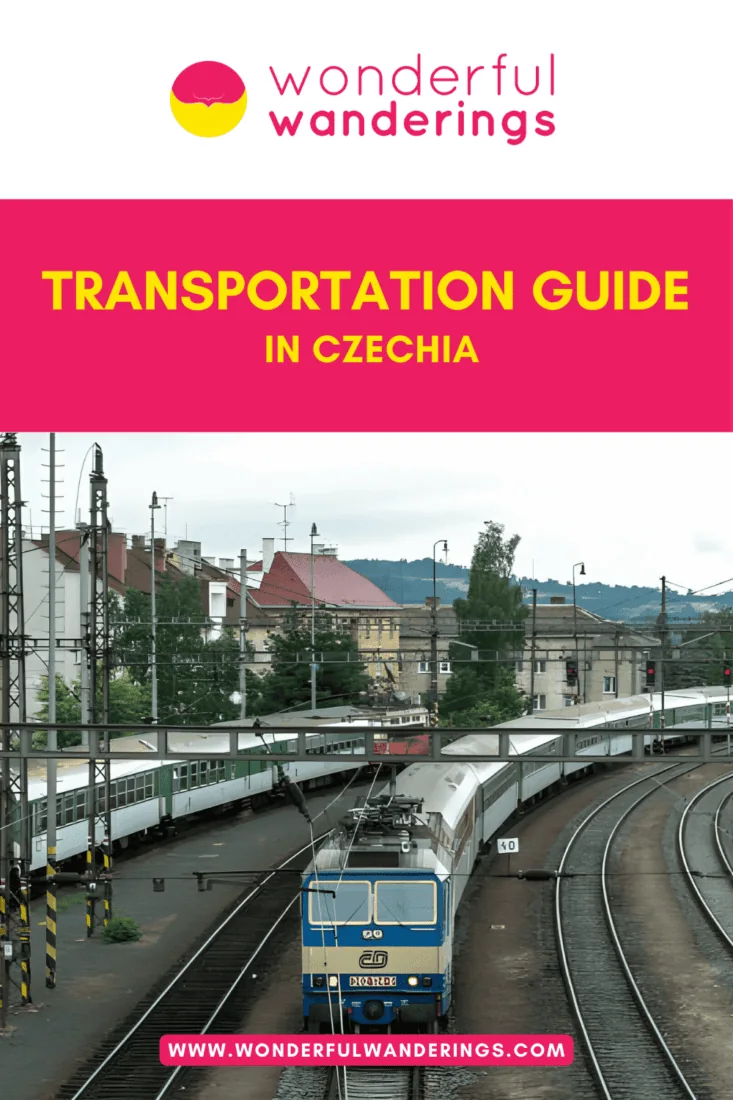Czechia, officially called the Czech Republic, is a landlocked country in Central Europe. It borders Germany to the west, Poland to the northeast, Slovakia to the east and Austria to the south. Czechia covers an area of 78,867 square kilometers (30,450 square miles). The main options for getting to Czechia include flying into Václav Havel Airport Prague. The country’s primary international airport hub or smaller airports like Brno, Ostrava, Karlovy Vary and Pardubice. Fast trains reach Prague from major European capitals in just a few hours, with Czechia having an extensive railway network connecting to all neighboring countries. Intercity buses like RegioJet and Flixbus provide budget transport to Czechia from European cities. Drivers can access Czechia via highways like the D1, which links Prague and Brno.
Czechia’s transportation from the airports includes buses, airport taxis, train connections, bicycle rentals and ferries. Buses offer affordable and frequent transport to cities across Czechia but involve transfers and limited luggage space. Pre-booked airport taxis provide quick transfers to final destinations but at higher costs. Fast trains from Václav Havel Airport reach Prague efficiently but may require combinations with buses or metro. Renting bikes allows travelers to reach areas not served by transit while getting exercise. Scenic river ferries conveniently link key destinations but have seasonal schedules. Driving and car rental allows independence to explore destinations at one’s own pace. The best option depends on budget, luggage, destination accessibility and desired travel time.
Where is Czechia Located?
Czechia, officially called the Czech Republic, is a relatively small landlocked country in Central Europe. Based on the sources, Czechia borders Germany to the west, Poland to the northeast, Slovakia to the east and Austria to the south. The country has an area of 78,867 square kilometers (30,450 square miles). Czechia is a fairly compact country compared to some of its larger neighbors. Czechia is slightly smaller than the U.S. state of South Carolina or the country of Ireland. Czechia is ranked 112th out of the 50 sovereign states and 5 constituent countries in total land area.
Public transportation in Czechia caters to metros, trams and buses forming an affordable, efficient network enabling car-free movement within major cities like Prague, Brno and Ostrava. Extensive routes reach almost every urban district, with frequent service and integrated ticketing across all transit types making travel smooth. Renting cars allows Czechs more independence to explore winding back roads and villages in the countryside that lack public transit. Driving facilitates access to remote mountain areas, scenic nature reserves and attractions that require a vehicle to reach. Having a car enables stopping spontaneously at roadside stands and small towns discovered along the way. Limited domestic flights play a small role, with service mostly linking Prague to Brno, Ostrava and Karlovy Vary in under an hour. Flights provide a time-efficient option for locals needing to travel quickly between these cities for business or personal trips. Cycling is a popular recreational transport mode, taking locals along both dedicated bike paths and winding rural roads. Czechs enjoy pedaling through small villages and vineyard-filled valleys and going on trips to neighborhood pubs. Biking provides exercise while emitting no pollution during shorter urban and rural trips.
How to Get to Czechia?
Czechia, officially called the Czech Republic is a landlocked country in Central Europe covering an area of 78,867 square kilometers (30,450 square miles). There are several main options for getting to Czechia. Firstly, the leading international airport is Václav Havel Airport Prague. This is the primary hub for flights into Czechia from destinations across Europe and the world. Other international airports include Brno, Ostrava, Karlovy Vary and Pardubice airports, though these have more limited flight connections. Secondly, fast trains reach Prague from major European capitals like Berlin, Vienna and Budapest in just a few hours. Czechia has an extensive railway network thanks to its central location in Europe. Trains connect Czechia to all neighboring countries including Germany, Austria, Poland, Slovakia and Hungary. Thirdly, bus companies like RegioJet, Student Agency and Flixbus operate routes between Czechia and European cities. Main bus stations are located in Prague, Brno and other cities. Buses provide budget transport to Czechia from regional destinations. Lastly, driving or renting a car through the D1 highway that connects Prague to Brno in under 3 hours. Other highways link Czechia to border Germany, Poland, Austria and Slovakia. Drivers need to acquire an electronic toll sticker to use Czech motorways. Czechia’s central location in Europe, integrated airports and extensive transport network including trains, buses and roads make it easily accessible for visitors.
How Many Airports are there in Czechia?
Czechia has 11 airports, with only a few open for commercial operations. Václav Havel Airport Prague is Czechia’s largest and most used airport and caters to a million passengers. It serves both civil and military functions. The airport has connections to 94 destinations on 54 different airlines. The Brno-Tuřany Airport is the second largest, serving around 470,000 passengers. It has connections to London, Moscow and Bergamo amongst others The Leoš Janáček Airport Ostrava serves over 250,000 passengers and offers flights to places like London, Warsaw and Burgas. Some smaller airports include the Pardubice Airport, Karlovy Vary International Airport and the Olomouc Airport.
The best transportation options for visitors to ride from the airports in Portugal include buses, airport taxis and trains. Firstly, buses offer an affordable and frequent way to reach cities across Czechia from the major airports. For example, bus 119 connects Václav Havel Airport Prague to the Nádraží Veleslavín metro and train station. Buses also access remote rural areas not served by rail. Buses take longer than trains and require transfers. Secondly, pre-booked airport taxis or rideshares through apps provide quick, direct transfers to hotels, homes and attractions in cities like Prague and Brno. Prices are fixed upfront, avoiding language issues or taxi scams. However, fares are higher than public transit options. Thirdly, airport train connections provide efficient links to destinations across Czechia and Europe. Fast trains from Václav Havel Airport reach Prague city center in under 30 minutes. Trains bring visitors into city centers but may require bus or metro combinations to reach accommodations. Buses, trains, taxis and airport shuttles can all provide convenient onward transportation from Czech airports. The best option depends on budget, luggage needs, destination accessibility and desired travel time.
What Type of Transportation can you Choose To get Around Czechia from the Airport?
Listed below are the types of transportation travelers can get around Czechia from the Airport.
- Buses. Buses provide affordable transport to cities across Czechia with routes from major airports. Buses access hard-to-reach rural areas not served by rail and luggage space is limited on crowded buses. Buses like the 119 bus take travelers directly to the metro system for access across Prague. The journey can take up to an hour and involves transfers, crowded buses and traffic delays.
- Taxis. Pre-booked airport taxi transfers offer quick, direct transport to hotels and homes in Prague or Brno without language issues and fares are much higher than public transit options like trains or buses. Additional highway tolls and tipping further increase costs and some vehicles have tight constraints on luggage capacity.
- Rental Cars. Renting a car allows maximum flexibility for road trips to see more of the beautiful Czech countryside and smaller towns at the traveler’s pace. Driving within Prague can be very complex, with one-way streets, unfamiliar signs, trams and extremely expensive parking. It is generally best to use public transportation when sightseeing in the crowded city center and historic areas. For countryside trips, renting a car is a great way to access villages and natural areas inaccessible by public transit.
- Bicycles. Cycling immerses active travelers in Czechia’s varied landscapes, reaching areas inaccessible by car, though hilly terrain, inclement weather and winding roads covered in gravel or cobblestones can make cycling uncomfortable. Bikes emit no pollution but have little room for luggage.
- Ferries. Scenic river ferries conveniently link key Prague attractions and UNESCO sites while providing unique vantage points to enjoy natural beauty. Ferries have seasonal schedules meaning a limited operation in winter and transfers to inland destinations require combining with buses or trains.
Why is riding a bus in Czechia Economically and environmentally friendly?
There are several reasons why riding a bus in Czechia is economical and environmentally friendly. Firstly, buses connect remote rural areas and smaller towns in Czechia that might not have direct train or tram links. This allows people to access these areas at a low cost. Buses run frequently throughout the day, making planning trips to explore the country’s scenic beauty and cultural heritage accessible. Secondly, regional and intercity buses in Czechia are an efficient and comfortable option for travelers exploring beyond major city limits. Buses offer a convenient way to experience the country’s attractions without the higher costs of driving or taking the train. Buses also emit less CO2 per passenger mile compared to private cars. Lastly, public transportation like buses is generally cheaper than operating private vehicles. Riding a bus eliminates fuel and parking costs, saving money for both locals and visitors. Frequent riders can purchase discounted monthly passes for even greater savings. This makes buses an economical transportation choice in Czechia.
Why should you Consider Taxi Rides for Short Trips in Czechia?
Visitors should consider taxi rides for short trips in Czechia as they can save time and effort, provide comfort and reliability, offer door-to-door service and are generally affordable. Firstly, taxis can save time and effort compared to public transport for short distances. Taxis provide door-to-door service, eliminating the need to walk to and from metro, tram or bus stops. This is especially convenient when carrying luggage or traveling with small children. Secondly, taxis offer comfort and reliability. Taxis take the most direct route to your destination. Travelers can relax in the backseat while avoiding the stress of navigating a new public transit system.
Thirdly, taxis are generally affordable for short trips within cities in Czechia. Fares are usually charged by the kilometer plus an initial fee. Services like Uber provide upfront fare estimates so you can easily budget for a taxi ride.
Why Rental Cars are the Best Option to Go Around Czechia, Especially for the Family?
Rental cars are the best option around Czechia, especially for the family. Firstly, rental cars provide flexibility and freedom to explore areas beyond the major cities at your own pace. With young kids, stopping spontaneously or changing plans is invaluable. A rental car lets travelers quickly venture to smaller towns, scenic viewpoints or kid-friendly attractions. Secondly, traveling by rental car is more comfortable for families. Travelers will not have to worry about hauling luggage and equipment onto public transportation or keeping young kids entertained for long journeys. Kids can sleep or play in the backseat and there will be ample room for strollers, car seats, snacks and more. Thirdly, having a rental car works more economically for family travel in Czechia. Travelers save money by not purchasing multiple public transport tickets every day. Travelers can also choose to stay in more affordable accommodations outside city centers. The convenience and flexibility justify the rental costs.
Why should you Try to Take the Ferry in Czechia?
Ferries conveniently connect Czechia’s mainland airports and cities to its scenic islands and ports. Firstly, ferries provide a unique vantage point for travelers to enjoy Czechia’s natural beauty. Ferries allow travelers to slowly cruise along rivers and lakes, taking in scenic islands, forests, villages and castles from a water perspective. Secondly, ferries are a sustainable and eco-friendly transportation choice. Ferries produce fewer carbon emissions compared to other motorized options. Riding a ferry lets travelers easily access Czechia’s islands and lakes in an environmentally responsible way. Thirdly, ferries offer comfortable, affordable and leisurely travel between key destinations for travelers. Major ferry routes connect Prague and other cities to UNESCO heritage sites like Kutná Hora and the famous Bone Church. Travelers can relax onboard ferries while avoiding crowded highways and reaching remote and inaccessible areas.
Who would Consider a Bicycle as a Transporation to Go Around Czechia?
Cycling around Czechia can be an excellent option for some travelers. Firstly, budget backpackers and solo travelers would appreciate bicycling as an affordable way to explore the Czech countryside independently. Cycling allows travelers to set their route and schedule to discover villages and scenic natural areas at little cost. Camping along bike paths or staying in hostel dorms helps keep things cheap. Secondly, cycling enthusiasts visiting Czechia specifically to take on the hilly terrain and varied cycling routes would certainly opt to travel by bike. Avid cyclists come to challenge themselves on roads that wind through forests and farmlands, past vineyards and up into the mountains. Multiple-day rides with overnight stays in local inns immerse dedicated riders in Czech bike culture. Lastly, active families traveling with older children could consider cycling an adventurous way to bond while discovering the Czech landscape. Cycling’s slower pace allows families to make frequent sightseeing stops easily. Staying at family-friendly pensions along the way provides home-cooked meals and refreshing accommodation between rides.
What are the Big Towns in Czechia?
Czechia features four big towns. Prague is the largest city covering 496 square kilometers (192 square miles). It has an extensive integrated metro, tram and bus network with over 60 metro stations on 3 color-coded lines. Trams intersect the city, reaching areas the metro misses. Buses serve outlying neighborhoods and run all night. Trains arrive at numerous stations, quickly transporting travelers between neighborhoods. Brno is the second largest city spanning 230 square kilometers (89 square miles). Trams serve as the transportation backbone with 15 lines running through neighborhoods. Buses fill gaps, reaching the most remote areas. The main train station offers domestic and international routes. Ostrava covers 214 square kilometers (83 square miles). Its extensive system includes efficient trams connecting landmarks, crucial buses reaching remote districts and 4 train stations with domestic and international links. Plzeň covers 137 square kilometers (52 square kilometers). Its excellent transportation includes convenient trams and trolleybuses serving most areas, buses filling gaps in remote districts and trains offering domestic and international connections. Public transit in all 4 cities provides thorough coverage to transport travelers efficiently.
1. Prague
Prague is the capital and largest city in central Europe, Czechia. Prague covers 496 square kilometers (192 square miles). It lies on both banks of the Vltava River and consists of many neighborhoods with historic architecture spanning various styles including Gothic, Renaissance, Baroque, Art Nouveau and Cubist. Prague is an essential political, economic and cultural center of Czechia and central Europe. It has been the political capital of Bohemia since the 14th century and the capital of Czechoslovakia from 1918 to 1992. Key landmarks of Prague include the 9th-century Prague Castle complex, Charles Bridge, Old Town Square with its astronomical clock, the Jewish Quarter and Petřín Hill. Václav Havel Airport Prague is 17 kilometers (10.56 miles) from the city center and is easily accessible via bus, airport express or taxi. The city has extensive integrated metro, tram and bus networks and exact tickets can be used across all types of transport. A ride costs €1 ($1.09, £0.86) and tickets are available from station vending machines. The metro is the fastest way to traverse long distances, with 3 color-coded lines and over 60 stations. Trams intersect
the city, reaching areas the metro misses and require tickets to be validated before riding. Buses serve outlying neighborhoods and run all night. The funicular railway ascends Petrin Hill for panoramic views. Ferries cross the river and cable cars scale the heights. Intercity and international trains arrive at the central, Florenc bus station or numerous smaller hubs. Public transit quickly transports travelers between neighborhoods across the city. Prague’s efficient, interconnected transportation makes independent exploration of areas beyond the prime sights convenient for tourists.
2. Brno
Brno is the second largest city in Czechia, spanning 230 square kilometers (89 square miles). Brno comprises 29 separate districts from the historic city center on the banks of the Svratka River. Brno is an important cultural and economic hub of the South Moravian region and the country. Brno’s historic core landmarks include the 13th-century Špilberk Castle, the Cathedral of St. Peter and Paul and the Old Town Hall. The city also hosts several universities, modern business centers, technology parks and factories including the Liaz truck factory. The Brno Exhibition Center is one of the largest exhibition grounds in Europe.
Brno Airport lies 9 kilometers (9.59 miles) from the city center, easily accessible via bus 76 in 20 minutes. Brno has an extensive public transportation system of trams, trolleybuses and buses, providing thorough coverage across the city’s districts. A ride costs €3.32 ($3.61, £2.85) and tickets are available from machines at stops or via SMS. Trams serve as the transportation backbone, with 15 lines running through Brno’s neighborhoods and to attractions like Špilberk Castle. Buses fill gaps the tram network misses, reaching the most remote areas. Brno’s Main Train Station offers domestic routes plus international connections to Vienna, Bratislava and Budapest. Intercity and regional buses utilize the Zvonařka bus station.
3. Ostrava
Ostrava is the third largest city in Czechia, in the country’s northeastern part close to the Polish border. The city covers an area of 214 square kilometers (83 square miles). Ostrava is home to coal mines, ironworks, steel mills and engineering factories. Major companies headquartered here include Vitkovice Machinery Group, OKD and ArcelorMittal Ostrava. Various cultural and sporting events take place in Ostrava throughout the year, including the Colours of Ostrava music festival, the Janáček May classical music festival, the Summer Shakespeare Festival and NATO Days.
Ostrava Airport lies 20 kilometers (12.42 miles) from the city center. Ostrava has an excellent public transportation system that makes getting around convenient for travelers. The Airport Express bus provides a direct link, reaching downtown Ostrava in 30 minutes. Ostrava has an extensive public transportation system of trams, buses and trains. Trams form the backbone of Ostrava’s public transit network. They efficiently connect neighborhoods and landmarks across the city. Some trams have dedicated lanes allowing faster journeys than buses or cars stuck in traffic. Frequent tram routes see wait times of only 4-8 minutes. Buses fill crucial gaps not covered by trams, reaching Ostrava’s most remote districts. Some outlying areas would have poor transit access without buses. Buses travel on normal roads but provide essential links from neighborhoods to tram and train stations. Ostrava’s four train stations offer both domestic routes and international connections. Fast trains reach Prague in under 3 hours while overnight trains provide links to Warsaw, Vienna and Budapest. Trains bring visitors to the city efficiently while light rail commuter lines connect surrounding towns.
4. Plzeň
Plzeň, also known as Pilsen in English, is the fourth largest city in Czechia. The city is in western Bohemia covering 137 square kilometers (52 square kilometers). Plzeň is best known internationally as the birthplace of the Pilsner style lager in 1842 when local brewers first produced the revolutionary bottom-fermented beer that later conquered the world. The Pilsner Urquell Brewery stands on the original brewery site and offers popular tours. Other significant industries in Plzeň include engineering, food processing and IT hardware production.
Plzeň Airport lies only 6 kilometers (3.7 miles) north of the city center making it easily accessible via bus number 30 which runs regularly and reaches downtown Plzeň in about 15 minutes. Plzeň has an excellent public transportation system that makes getting around convenient for travelers. Trams form the backbone of Plzeň’s public transit network. They efficiently connect neighborhoods and landmarks across the city. Some trams have dedicated lanes allowing faster journeys than buses or cars stuck in traffic. Frequent tram routes see wait times of only 4-8 minutes. Trolleybuses fill crucial gaps not covered by trams, reaching Plzeň’s most remote districts. Some outlying areas would have poor transit access, without trolleybuses. Trolleybuses travel on normal roads but provide essential links from neighborhoods to tram and train stations. Plzeň’s Main Train Station offers domestic routes within Czechia and international connections to Germany. Fast trains reach Prague in under 2 hours while overnight trains provide links to Berlin and Munich. Trains bring visitors to the city efficiently while light rail commuter lines connect surrounding towns. Buses fill in gaps not served by trams or trolleybuses, extending to Plzeň’s most remote neighborhoods. Some districts would have no transit access without buses. Buses travel on normal roads but are crucial for the last mile of journeys.
When is the Best Time to Visit Czechia?
The best times to visit Czechia are spring, from March to May and fall, from September and November. In spring, average temperatures with a mix of sun and rain showers. Spring brings blooming fruit trees flowers, mild weather for sightseeing and lively Easter celebrations. Late spring has warmer weather and more outdoor beer gardens open. Fall is an ideal time with colorful autumn scenery and fun harvest festivals like wine, beer and pumpkin-themed events. Prague’s Christmas markets open in late November. Both spring and fall have fewer tourists than summer, allowing for better availability and prices on hotels and activities.
How Is Driving in Czechia?
Driving in Czechia is generally a pleasant experience. The road infrastructure is well-developed with an extensive highway and expressway network linking major cities like Prague, Brno and Ostrava. Most roads are well-maintained, directions are marked and traffic outside Prague is manageable which makes driving in Czechia easy and safe even for new drivers. Rules follow European standards, such as driving on the right and speed limits range from 50 kilometers per hour (31 miles per hour) in cities to 130 kilometers per hour (18 miles per hour) on motorways. Priority is given to vehicles coming from the right at intersections. Signage uses standard symbols and Czech words. Car rental is affordable per day for manual transmission cars which are more common than automatics. Petrol stations are readily available countrywide, often open 24/7, but most do not have self-service pumps. Parking can get complicated in historic city centers like Prague and Český Krumlov where public transportation is easier.
Can you rent a car in Czechia?
Yes, travelers can rent a car in Czechia. It is available across Czechia from major companies like Hertz, Sixt, Enterprise, Budget, Europcar, etc. Renters must be 21+ years old and have held their driver’s license for 2+ years. Drivers under 25 may pay extra fees. A valid license and credit card are required. Roads are well-maintained and signed, with right-hand traffic. Headlights must always stay on. Highway toll stickers are compulsory. One-way rentals between cities are possible depending on the rental company and rates. Convenient depots for car rental in Czechia include major airports, train stations and city centers.
Does Rental Cars have Insurance?
Yes, rental cars in Czechia are required by law to carry basic third-party liability insurance. This covers damage or injury to others if the driver is at fault in an accident. The basic insurance does not cover damage to the rental vehicle itself. Travelers must purchase an additional Collision Damage Waiver (CDW) and Theft Protection (TP). This is highly recommended as it caps the financial liability, which may range from €452 ($500, £392) to €1,809 ($2,000, £1570) or more. The renter is responsible for the vehicle’s total value if it is damaged or stolen without the extra coverage. The basic insurance and additional coverage options automatically include the rental rate when booking. Renters are advised to verify coverage inclusions, liability limits and options for expanded protection with their rental provider at the start of the rental term to ensure adequate coverage on Czech roads.
Are the Bus Fares in Czechia Cheaper than Renting a Car?
Yes, buses in Czechia provide an economical transportation option for locals and visitors. Fares start from as low as €1.01 ($1.10, £0.87) for short journeys and rarely exceed €12.08 ($13.19, £10.38) even for long intercity routes. For instance, the bus from Prague to Brno costs €8.06 ($8.79, £6.92) one-way. Considering a rental car would cost a minimum of €20.14 ($21.98, £17.30) per day excluding fuel, buses are the cheaper choice. Buses reach remote towns and villages across Czechia that trains do not access. Buses run frequently with routes connecting major cities like Prague, Brno and Ostrava and smaller destinations. Discounted passes are available for longer stays, adding to the affordability. In contrast, rental cars have expensive insurance costs compared to daily fees. Parking charges may additionally apply in city centers. Buses in Czechia offer visitors flexibility and savings, with extensive coverage across the country. Rental cars provide more independence but come at a steep price. Buses are a budget-friendly and convenient intercity transportation choice for budget-conscious travelers without the hassle of driving in a foreign country.
PIN FOR LATER
Find below our top guides about Czech Republic.

